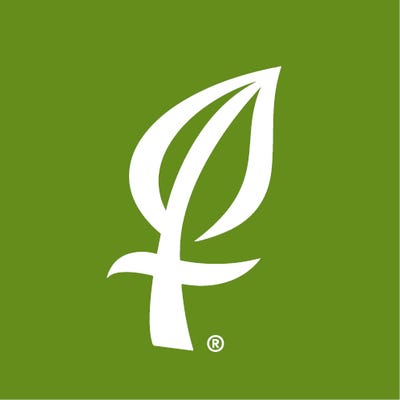March 8, 2022

The Russian invasion of Ukraine is causing “gut-wrenching” volatility in grain markets and pushing already high prices for fertilizer and diesel even higher, economists with the University of Arkansas System Division of Agriculture said this week.
Much of the world, including the United States, is imposing economic sanctions against Russia, including a halt of exports to Russia and the freezing of Russian assets in banks around the world.
Together, Russia and Ukraine account for about 29 percent of global wheat trade, with Russia the world’s top wheat exporter. Ukraine accounts for about 16 percent of global corn exports.
Scott Stiles, agricultural economist for the Division of Agriculture, said the situation will offer both opportunities and hardship for growers in Arkansas and elsewhere.
“Over the past week, prices for the major grains traded to new highs,” Stiles said. July wheat futures contracts rose to $9.42-3/4 on Feb. 25 — the “highest the July contract has traded since February 2011.”
However, “grain trading following the full invasion has been incredibly volatile,” he said, with July wheat contracts moving 93 cents in one trading session, from $8.50 to $9.42-3/4.
“Unheard-of and gut-wrenching for growers and end-users alike,” Stiles said.
Corn futures have been similarly turbulent, ranging from $5.94 to nearly $6.64 during Feb. 24-25 trading.
Grain trade
On Feb. 24, the Ukrainian government suspended commercial shipping from its ports. Cargill, ADM, Bunge and other privately owned grain companies have suspended operations in Ukraine.
“At least for the moment, Russian exporters are still fulfilling existing contracts and ships are departing,” Stiles said. “From what I can gather today, the overwhelming majority of world grain importers are not making any new deals with Russia.”
Stiles said that major wheat importers are currently looking at other sources outside the Black Sea region. ”In the near term, Australia, Canada, the EU and Argentina will see an uptick in wheat exports first,” he said. “The United States may see some increase in wheat exports as well.”
Higher corn exports
Both China and the European Union have historically been major purchasers of corn from Ukraine — a market gap U.S. producers will likely have the opportunity to fill. While South America typically exports some amount of corn each year, those supplies won’t be available for a few more months, Stiles said.
“Before the Ukraine-Russia situation was very concerning, corn and soybean futures had already been on edge due to a drought in key areas of South America,” Stiles said. “Weather issues in south Brazil and northeast Argentina kicked off a soybean price rally in early December.”
See more: Special report explores agriculture impact of Russia-Ukraine conflict
Prices for both corn and soybean have risen steadily since late 2021, as global supplies of both crops have tightened. Cotton and rice prices are likewise at multi-year highs.
“There's plenty of competition for acreage this year,” Stiles said.
Input costs on the rise (again)
The Russian-Ukrainian conflict is pushing both fuel and fertilizer prices even higher, at a time when some input costs have already risen 300 percent or more over the previous year.
“Russia is the world's largest fertilizer exporter,” Stiles said.
After a brief period of moderation in January, U.S. Gulf prices for di-ammonium phosphate increased steadily throughout February, increasing about 20 percent in total.
“Gulf urea prices were very volatile last week, trading in a $175/ton range,” Stiles said. “Following the invasion news, Gulf urea prices traded to $705/ton, which hasn't been seen since early January.”
Belarus, which borders Ukraine to the north, is the third-largest global potash producer, accounting for 18 percent of global production.
“Potash prices have now increased for three straight weeks,” Stiles said. “Belarus is a land-locked country and has had a transportation agreement with Lithuania for rail movement of potash to a port on the Baltic Sea, but that agreement ended Feb. 1.
“Belarus is currently without port access,” he said.
Crude oil has also been trading higher recently. West Texas Intermediate contract futures traded up to $112.51 on March 2.
“That's the highest WTI crude has traded since May 2011,” Stiles said. “Diesel futures have traded near $3.45. This represents a major cost increase for ag producers.
“A year ago, diesel futures were trading at $1.83 and WTI was $60 a barrel,” he said. “For growers that weren't able to lock in fuel costs at lower price levels, the sharp rise in energy costs may have some impact on planting decisions.”
As of March 2, the U.S. had not sanctioned Russian exports of oil and gas, although U.S. President Joe Biden was quoted as saying the move was “on the table.”
Stiles said there is always a degree of volatility in agricultural commodity trading, given the unpredictability of weather and trade disputes. The introduction of a war that disrupts global grain and energy trade, however, is truly a “black swan” event.
“A lot depends on how long the conflict lasts,“ Stiles said. “In the near term, it appears Russia and Ukraine will both be out of the global grain market. That is having an impact not only on grain, but energy and fertilizer prices as well.”
Land expenses
The rising input costs created by the Russian invasion of Ukraine is also contributing to another important cost consideration for producers — land expense. Particularly if producers are on a straight crop share (for example, 1/4th of gross revenue), according to University of Tennessee Economist Aaron Smith.
“Last year, the December corn futures contract averaged $4.60/bu from January 1 to March 31. This year the average as of February 15, for the December contract, was $5.70/bu. So, assuming an expected yield of 175 bu/acre and a 1/4th crop share would result in budgeted land expenses of $201.25/acre in 2021 and $249.38/acre in 2022,” Smith wrote in a recent UTCrops.com blog. “Prices are up so both landowners and producers benefit, correct?”
“If prices hold and yield is achieved the landowner clearly benefits – their share of revenue has increased $48.13/acre, compared to the previous year. The producer’s benefit is far less certain given changes in costs, even if prices hold and yield is achieved. Our crop budgets estimate variable cost for corn production in Tennessee at $621.71/acre in 2022 compared to $414.36 in 2021. Removing crop share expense and variable costs leaves the producer with $126.42/acre ($997.50 – $249.38 – $621.71) to cover fixed costs, living expenses, return on investment, and general farm overhead in 2022. Compared to $189.39/acre ($805 – $201.25 – $414.36) in 2021. This is a $62.98/acre reduction in budgeted partial returns to the producer from 2021 to 2022.”
Smith says it may be time to work with landowners to reevaluate land lease agreements. It may be time to consider moving to cash rental rates, or developing an arrangement where landowners share in production expenses and gross revenue. Another option is a hybrid arrangement where producers pay an agreed upon cash rental rate plus a bonus payment based on profitability at the end of the year.
“There is no one size fits all for addressing leased land expenses, however maintaining an honest dialogue between property owners and producers can provide the foundation for a mutually beneficial long-term relationship. Leaving an existing crop share arrangement in place may be the best solution, however producers should be cognizant that the risk profile has shifted compared to previous years,” Smith said.
Sources: University of Arkansas System Division of Agriculture and University of Tennessee Institute of Agriculture, which are solely responsible for the information provided and are wholly owned by the sources. Informa Business Media and all its subsidiaries are not responsible for any of the content contained in this information asset.
About the Author(s)
You May Also Like






